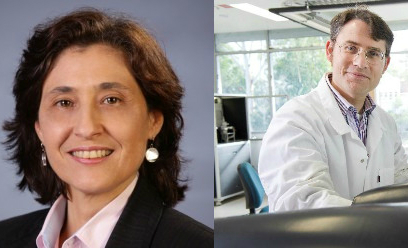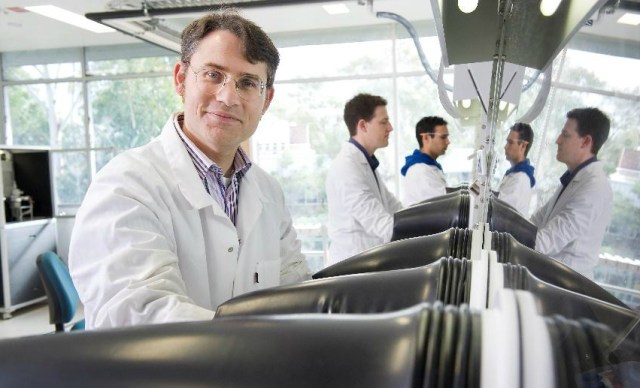
Hon. Lily D’Ambrosio, Minister for Energy, Environment & Climate Change, will officially open the expo tomorrow, in a show of support for organic solar cell technology.
PacPrint 2017’s organisers say the show demonstrates a commitment to smart manufacturing technologies and innovation which will deliver energy solutions to manufacturing industries across Australia.
PacPrint will the first public demonstration of new printable solar energy panels developed by the University of Newcastle (UON).
Located on the lawn area between the MCEC and the Yarra River, the custom-built 100sqm pop-up site will allow the public to touch the material and walk through and under it, as well as introduce its potential to the 12,000 print industry professionals who are expected to attend PacPrint 2017.
Minister D’Ambrosio says, “This project is yet another great example of the innovative new energy technologies that we can develop here in Victoria with the right support. It is good for local manufacturing, and it is good for jobs.”
The organic solar cells module is an initiative from the Priority Research Centre for Organic Electronics (PRCOE) at UON. Organic solar cells are the third generation of solar technology and are produced via a printing process.
“The cost and speed at which this technology can be deployed is exciting, particularly in the current Australian energy context where we need to find solutions, and quickly, to reduce demand on base-load power,” says printed solar creator, UON’s Professor Paul Dastoor.
“Because of the manufacturing process used, these low-cost, light-weight cells have the potential to revolutionise the production of solar panels and solar energy, as well as helping to deliver a new functional printing revenue stream for the printing industry.”
Print is the second-largest manufacturing industry in Australia generating $8bn per annum.
Comprising 5,294 businesses, small and large, across metropolitan and rural areas, it employs more than 240,000 people across the entire graphic communications chain, making it arguably Australia’s largest manufacturing employer, says the event organisers.
Organic solar cells are only one example of the amazing applications of organic printed electronics being developed for a multitude of uses and, together with things like 3D printing, which is delivering opportunities across areas like Health, Education and Retail, technology is creating important new markets for print.
PacPrint 2017 will showcase the latest advances from more than 150 exhibitors across 8000 square metres of exhibition space, together with a future-focused professional Forum and Workshop program, at the MCEC from 23 – 26 May inclusive.
“We are delighted to be bringing a diverse range of world-leading technologies to PacPrint, including exciting developments like the organic solar initiative, which represents a tremendous opportunity for the sustainability and future of the print industry,” says Adrian Fleming, Chair of PacPrint 2017, adding, “The future for print looks bright indeed.”
Comment below to have your say on this story.
If you have a news story or tip-off, get in touch at editorial@sprinter.com.au.
Sign up to the Sprinter newsletter



